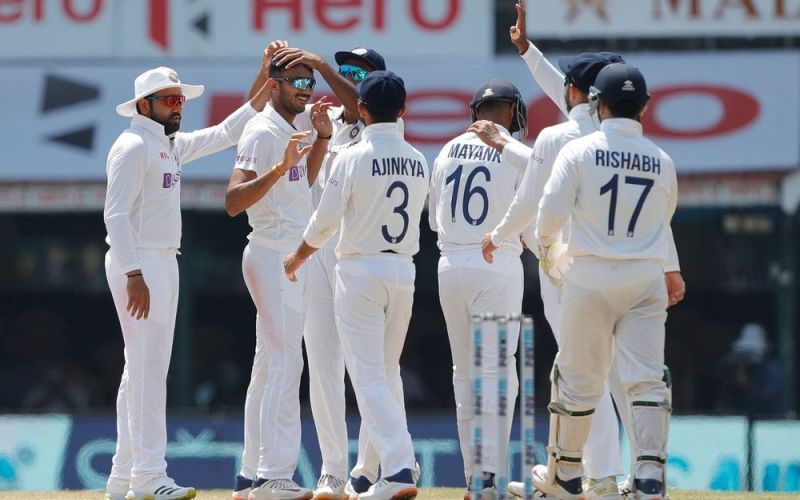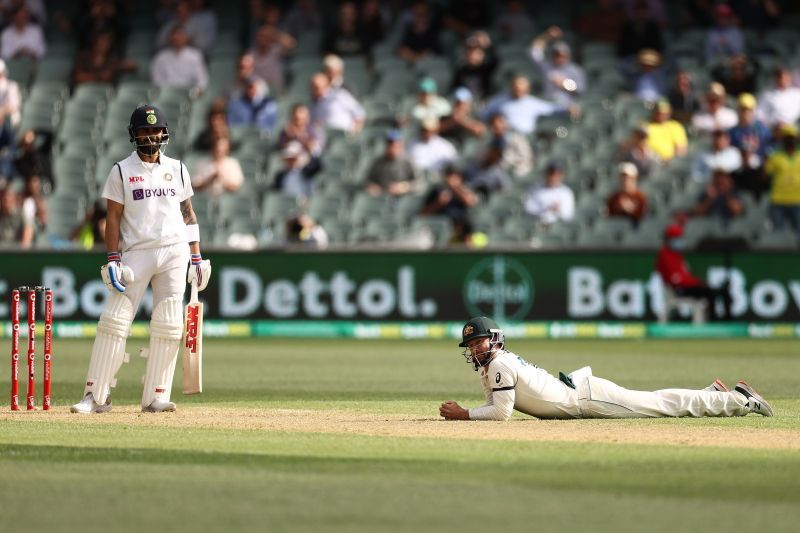
Three things to watch out for as India play England in the Day-Night Test match

With the Test series between India and England tied at 1-1, the caravan moves to Ahmedabad. Given that it is a pink-ball Test, England are likely to compete harder in the first international game at the recently reconstructed Sardar Patel Stadium. The hosts, on the other hand, can't afford any more defeats in this series if they are to qualify for the World Test Championship final.
Team India has played two Day-Night Tests so far, one at home and one away. Their previous pink-ball fixture - in Australia - saw an all-time great collapse (36 all-out) as Josh Hazlewood and Pat Cummins scalped five and four wickets, respectively. India's first pink-ball Test, played at the iconic Eden Gardens in Kolkata, was the shortest (968 balls in the match) non-drawn Test ever in India.
On the other hand, England have played three Day-Night Tests. In their last pink-ball Test - at Eden Park in Auckland - England also suffered a collapse as they lost 9 wickets for just 27 runs (58 all-out) in the first innings of the match.
One could possibly expect a collapse in the third Test as well. Since the first Day-Night Test was played, teams have been bundled under 100 once in eight completed all-out innings while the number rises to once in 48 innings in Day Tests.
The obvious reasons could be the more pronounced seam of the pink-ball and the lack of regular pink-ball games, so comparatively less familiarization with the ball itself.
The ball in the Syed Mushtaq Ali Trophy 2020-21 games played at this ground seamed and turned as well. The pacers are expected to have a big say in the match, but the spinners won't be out of the game either. Taijul Islam and R. Ashwin got a decent amount of turn in the Day-Night Test in Kolkata. Also, the pitch used in the SMAT matches here was on the slower side.
The other issue which batsmen might face is the visibility of the pink-ball. In the Day-Night Test between India and Bangladesh, the visiting batsmen were hit on the head quite a few times.
Also, there have also been instances of fielders misfielding under floodlights. Apart from visibility, the pink-ball also moves quickly through the air, and the batsmen might face issues, particularly against express pacers.
All in all, it will be a mouth-watering contest. Here are three things to watch out for in the upcoming Test.
1. Will Hardik Pandya get a chance?
During India's tour of Australia, Indian skipper Virat Kohli said that Hardik Pandya would be considered for the Test team once he starts bowling. The fitness issues haven't helped Hardik, and India need to manage him well, given his importance to India's limited-overs team.
Hardik has been working hard on his batting in the nets, but whether he can bowl is not yet known. Since he is in India's Test squad, we can probably assume that he is fit to bowl.

This Test is the best chance for the all-rounder to find a place in India's Test XI in this series. Team management might go with the fast-bowling all-rounder in the pink-ball Test as Ravindra Jadeja is still unavailable. In addition to the top-6 batsmen, India might play Hardik, Axar, Ashwin, Ishant and Bumrah. The other option - in case Hardik misses out - is to continue with Axar at No. 7, with Ashwin, Ishant, Siraj and Bumrah to follow.
Hardik, at No. 7 as a batting all-rounder, should work for India in a pink-ball Test at home. India might require batting depth against a good English pace attack. The right-arm pacer can also chip in with the ball and could provide better balance for the team.
2. Who stands up for England with the bat?
Apart from the first innings of the first Test, England's batting unit has failed to step up so far. The visitors have failed to cross the 200-run mark in three out of four innings. India's second-string bowling attack - without Jadeja, Shami and Bumrah (one Test) - has performed well enough to restrict England.
Since the Test series in Sri Lanka this year, Joe Root has been the only consistent performer. While Dan Lawrence has been impressive against spinners, he hasn't scored enough runs. England need big runs on the board, and barring Root, others have failed to contribute anything substantial.
The turning ball has caused problems for English batsmen, and now, they will be facing good pacers in challenging conditions. The Indian pacers as well as R Ashwin (in Australia) performed well in both pink-ball Tests. They have restricted the opposition to under the 200-run mark in three out of four innings.
England's opening batsman Rory Burns has been a bit out of form as well. In his last five Tests, Burns averages 9.75, with the highest score of 33. The southpaw has already bagged two ducks in this series. With Ishant and Ashwin - who are mighty effective against LHBs - in the opposition, Burns isn't going to have it easy.
Jonny Bairstow and Joe Root have struggled against top-class pacers - particularly against incoming deliveries - in seaming conditions over the past few years. They might be in troubled waters again if Ishant and Bumrah hit the right areas and the ball moves.
Apart from the 82-run knock in the first innings of the series, Ben Stokes hasn't enjoyed his time in India. Ashwin, a wizard against left-handed batsmen, has scalped Stokes' wickets on three occasions in the series and 10 times in his Test career.
Ashwin hasn't allowed Stokes to play big shots - he has got him out by beating his edges, by turning the ball away, and mixing it up with drift; Ashwin has properly trapped Stokes in the tournament so far. The off-spinner has constantly troubled Stokes, and countering Ashwin should be the southpaw's main task.
Ollie Pope has registered three scores of 22 or more in this series. However, he has failed to convert the starts into big scores. The right-handed batsman has also faced over 60 balls in three innings. England would want big runs from Pope, who is a fine batsman and capable of scoring playing huge knocks.
While the responsibility will mainly fall on captain Joe Root, the contribution of the other batsmen, particularly Dan Lawrence, Ollie Pope and Ben Stokes, will be vital.
3. Can India counter Anderson and Co.?
As mentioned earlier, batting will be a challenge. Besides having home advantage, India have the requisite skill-set to tackle the conditions. Rohit Sharma and Shubman Gill displayed their ability against the new ball in Australia. Cheteshwar Pujara, Virat Kohli and Ajinkya Rahane have already proven their mettle to do well in challenging conditions in the past.
However, the Indian batsmen would need to be disciplined if the ball moves. Virat Kohli's knock in the Adelaide pink-ball Test is a good example of disciplined and controlled batting in tough conditions. The Indian skipper has stood tall for his side in both Day-Night Tests and will want to be among the runs again.

Despite having skilled batsmen in their ranks, the hosts won't have it easy. The pace duo of Jofra Archer and James Anderson can be very lethal if the ball moves. Whilst Archer is expected to strike at regular intervals and Anderson, to be economical, they can trigger a collapse if the pink-ball does its bit.
In three Day-Night Tests, Anderson has picked up 14 wickets at an average of under 18. Archer is yet to play a pink-ball Test, but there is no doubt about his skills. England's third pacer will be one of Stuart Broad, Mark Wood and Olly Stone. Broad is quite good; Wood has evolved as a Test bowler and Stone was impressive in the last Test.
Ben Stokes has bowled just 12 overs in the series, but he is likely to play a greater role in the third Test. Stokes can be very handy with the ball.. Seam, swing and reverse-swing have all troubled India as they've lost quick wickets on a few occasions recently.
India wouldn't want to lose wickets in a cluster again. Thus, patience and discipline should help India if the conditions are challenging.